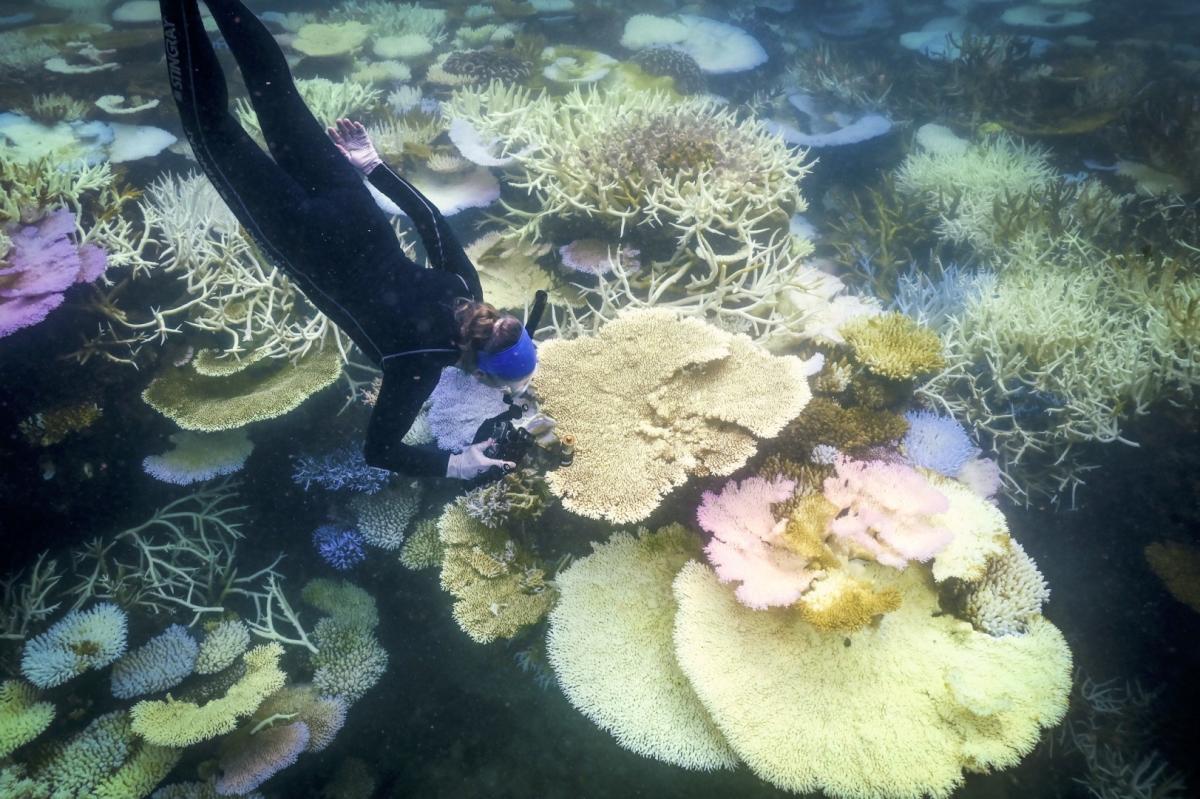Bleaching occurs when water temperatures rise and coral expel microscopic algae known as zooxanthellae to survive.
Australia’s Great Barrier Reef experienced the worst bleaching event ever recorded in the summer months of 2023 to 2024.
Reports denying the role of human-induced warming in damage to reefs are incorrect, scientists say.
“The claim that bleaching is caused by natural sources is unfounded, and in fact at this point in climate change a ridiculous and downright dangerous claim,” University of Victoria marine ecologist Julia Baum (archived here) told AFP on April 17.
“While it is true that an individual coral colony can bleach if exposed to adverse weather conditions, the widespread coral bleaching we are now witnessing – on coral reefs around the world – is directly caused by climate change,” she says. said.
Often called the world’s largest living structure, the Great Barrier Reef is an expanse of 2,200 kilometers long and is home to an astonishing variety of biodiversity, including more than 600 species of coral and 1,625 species of fish.
Scientists have observed that extreme bleaching – when more than 90 percent of the coral cover on a reef is bleached – occurred in all three regions of the Great Barrier Reef (archived here). The phenomenon is linked to ocean temperature data, they say (archived here).
Increasing concentrations of greenhouse gases are warming the oceans and warmer seas in turn are strongly affecting the health of reefs, making them one of the most vulnerable ecosystems to climate change (archived here).
Impact of El Niño
El Nino is a natural cyclecal climate pattern, which is warming the sea surface in the Pacific Ocean, leading to warmer weather worldwide (archived here). The current El Niño occurs every 2 to 7 years and, according to the US National Oceanic and Atmospheric Administration, originated in June 2023, and weakened as of April 11, 2024 (archived here and here).
The rRecent bleaching events aren’t just happening because of El Niño, says Sara Cannon, a postdoctoral researcher at the Institute for Oceans and Fisheries, at the University of British Columbia (archived here).
“Basic sea surface temperatures are higher due to human-induced climate change, and El Niño is further exacerbating these already high temperatures, causing reefs in general to experience more heat stress,” she said on April 17.
Terry Hughes, director of the Australian Research Council’s (ARC) Center of Excellence for Coral Reef Studies (archived here), said scientists are also seeing warming in other weather conditions.
“In 2022, we saw our first mass coral bleaching on the Great Barrier Reef during the La Niña phase of ENSO cycles – we no longer need an El Niño event to cause mass bleaching,” he said on April 17.
Jonathan WALTERAníbal Maíz CáceresAFP
Sarah Davies, assistant professor at the Marine Population Genomics Lab at Boston University (archived here) agreed that the coral bleaching events happening worldwide are unprecedented.
“The devastation caused in the Caribbean, Brazil and now the entire Great Barrier Reef and so on will probably go down in history as the most devastating blow to coral reefs ever,” she said on April 18.
Vulnerable recovery, multiple threats
Bleaching doesn’t automatically kill corals, explains Sarah Bedolfe (archived here), a marine scientist at the nonprofit Oceana. “If the corals are otherwise healthy and temperatures return to normal, given enough time, the corals can sometimes recover,” she said on April 18.
But repeated bleaching, combined with continued pressure from other threats including overfishing (archived here) and pollution (archived here), will lead to mass coral deaths worldwide, she said.
A 2020 report from the United Nations Environment Program found that about 14 percent of the world’s coral was lost between 2009 and 2018 because the interval between each mass bleaching event was insufficient for reefs to recover (archived here).
Hughes from ARC said, “One hundred million corals have already died this summer from heat stress,” and reefs have been unable to recover as the gap between repeated mass bleaching and mortality events narrows.
“We had a 14-year gap on the Great Barrier Reef between 2002 and 2016, compared to five events in less than a decade (2016, 2017, 2020, 2022 and now 2024),” he said.
Jonathan WALTERJean-Michel CORNUAFP
Marine biologist Anne Hoggett (archived here), who lived and worked on Lizard Island (archived here) in northeastern Australia for 33 years, said that when she first arrived, coral bleaching occurred only once every ten years.
Now it happens every year, she told AFP, with about 80 percent of the island’s reef’s fragile Acropora corals suffering bleaching this summer.
“We don’t know yet if they’ve suffered too much damage to repair or not,” Hoggett said.
AFP has debunked other claims about Australia’s Great Barrier Reef and the impact of El Niño on ecosystems.






